‘The Missionary Race’
The Poyntons of New Zealand
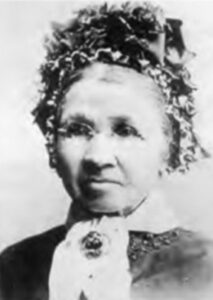
Mary Poynton
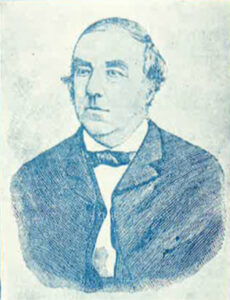
Thomas Poynton
In December 1931, the Marist Messenger carried an article about Mary and John Poynton, who came to New Zealand from Australia in 1828. It is re-printed here, adapted and abridged. ‘The Missionary Race’ refers to people exiled from Ireland.
Sydney, 1828
Among the close-knit Irish Catholics of Sydney in 1828, everybody was pleasantly interested and excited when the news went round that young Thomas Poynton had got a good post, in charge of a store and sawing station, at Hokianga in New Zealand, and that he was taking there with him as his bride the nicest and best girl in Sydney -- little Miss Kennedy, the seventeen year old daughter of ... Thomas Kennedy of Wexford.
They had known her all her life, but it is doubtful if even James Dempsey, her godfather, who had taken a particular interest in her since her father’s death, knew what stuff there was in this little bride, or the great things she and her husband were to do for God and religion in their new home. For, in the ship that sailed with them from Sydney Harbour towards the end of 1828, were carried the foundations of the Catholic Church in New Zealand!
1,000 miles, 2,000 miles
How that came about we learn from the narrative dictated by Thomas Poynton himself a little before his death:
In the latter end of 1828 I arrived in Hokianga, New Zealand, to take charge of a store and sawing station. I brought with me a young wife, a native of Sydney, a Catholic and of Catholic parents, and in the course of time God gave us a daughter. My wife took the child to Sydney, 1,000 miles from Hokianga, to be baptised by the Rev Fr Therry, and then my wife and child returned to Hokianga. Two years later my wife had another child, a boy, and this time also she took the baby to be baptised by Father Therry, in Sydney, but this time as the ship went round by Hobart town, she had to travel 2,000 miles.
The article continues:
We can imagine how this young Irish Catholic mother who counted no hardship too great, to have her child baptised by a priest, and this young father who seconded her so loyally, brought up the children God gave them. There was not a priest nearer than a thousand miles, but every night there was the family rosary in the Poynton home, and the neighbours (Māori among them) got into the habit of gathering for it, and to hear Thomas Poynton read the prayers of Mass on Sundays and to give them a little instruction out of the pious books which his wife had brought back with her from Sydney.
Back to Sydney
At last news reached the exiles that a Bishop had been sent to Australia, and Thomas Poynton, urged by his good wife, went specially to Sydney to see whether a priest could be got for the little Catholic colony -- Irish for the most part -- then in New Zealand.
Unfortunately, priests were still too scarce in Australia for one to be spared for New Zealand, and all Dr Polding could do was to give Thomas Poynton a supply of Catholic books, and a few written words of encouragement and exhortation which he was to read to his ‘flock.’ Twice did this apostolic-minded Irishman renew his journey with the same object.
Good news at last
The third time he took joyful news back with him. New Zealand was to be destitute of priests no longer. The French Marists, under Bishop Pompallier, were even then on their way.
They came at last, the priests so long prayed for, so eagerly desired, Bishop Pompallier and Father Servant SM. We can imagine the welcome that awaited them in the Poynton household, where they were at first to take up their quarters. But, fortunately, we do not need to imagine it, for Thomas Poynton is close at hand to tell us of it himself:
I, at once, gave the bishop and his people my own house, and fitted up a new store, lately built, for myself and my family. About ten days after the arrival of the Bishop my only son died. Over his grave I placed the first ever Catholic cross that was ever erected in New Zealand. My little daughter, Catherine, was the first child ever baptised in the Catholic Church in New Zealand, as her brother was the first ever buried according to the rites of the Church in that country.
Cardinal Moran tells us that it was in Mr. Poynton’s house that the Holy Sacrifice of the Mass was celebrated for the first time in New Zealand, and it was further his privilege, at the request of the Bishop and under his guidance, to erect, at a short distance from his house, a church dedicated to God in this now flourishing portion of the Master’s vineyard. It may be added that for thirty years Mr Poynton and his wife continued to devote their time and their means to aid the Bishop and his clergy in their work, being at all times ready to discharge even the humblest duties on their behalf in the interests of religion.
On strong foundations
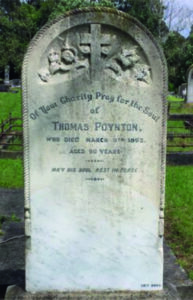
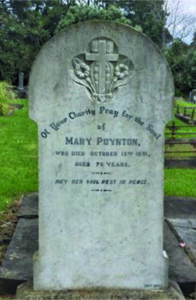
That is the story of Thomas Poynton and his brave and pious wife, who sowed Irish Hail Marys for nine long years, and kept alive the faith among the Catholics of New Zealand until the priest they prayed for came at last. Because they were faithful children of the great ‘Missionary Race,’ God was pleased to grant that a work enduring and strong, should be wrought by their hands -- no less a work than the laying of the foundations on which stands, in its beauty and its strength, the Catholic Church in New Zealand today. Looking around, we see the monument of the Poyntons, but our gratitude to them remains to be expressed in our human way, by another monument that will place the graves of the Poyntons among the most sacred shrines in New Zealand.
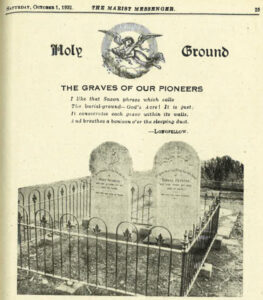
Marist Messenger, October 1932 O'Neill's Point Cemetery, Belmont, Auckland, Block R Plot 110
 Entries(RSS)
Entries(RSS)